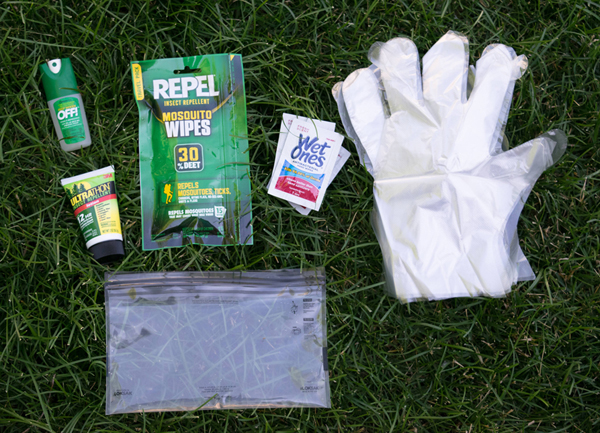What’s in My Bag — Wayne Ruffner

Outdoorsman shares his ultimate bug repellent kit
I’ve been in a few mosquito-plagued areas enough times to know that the “just use DEET” advice doesn’t really get it. DEET has a bad habit of melting different plastics, and while there’s no shortage of ways to get it out of a container, there are few good ways to keep it off your hands. But it is very good at keeping mosquitoes at bay. Yes, washing your hands after putting DEET on is a good idea — if that’s available.
Also, DEET isn’t the only player anymore, now there’s Picaridin too. Yes, there are natural repellents but I wasn’t going to fool with repellents that weren’t big & burly.
So, for either DEET or Picaridin, sprays are good for broad coverage (like the top of your head), but suck at ankles, for example. Lotions are generally great but depend on getting your hands contaminated more than anywhere else. Wipes are also a good option, but obviously, they also get your hands contaminated. There really are few ways to protect yourself without making a mess of your hands.
And, if you’re traveling with this stuff, leaks, though pretty rare, are a miserable experience.
So I wanted to see if there was a way to tame this stuff. I was preparing for a trip to the Canadian Arctic, and I figured this was the opportunity to put things to a (probably disease-free) test.
I’ve been using Aloksak bags for a while now and really like them. It seemed to me that these might hold up to DEET-melting effects, and the people at Loksak agreed that a test was in order. They tried several brands & percentages of DEET on their material and reported no effects. So I was going to use these to contain my kits to protect the other contents of my travel bag.
I tried similar douse and wait tests on several types of disposable gloves — they seemed to me to be the best hope to keeping my palms and fingers clear of bad stuff. Surgical-style nitrile, vinyl and latex gloves along with cheapo food-service gloves got several drops of 97% DEET and sat on a shelf for several days. (I thought re-usability would be important in areas as remote as I was planning to be in.) The nitrile was severely weakened, the vinyl looked like a rocket went through it and the latex fared nicely, though it was also weakened. The food-grade cheapie, of HDPE, showed no effect at all, after even a week of standing drops of DEET directly on it.
So I made two kits of Aloksak bags, a short stack of gloves and various applicators of both DEET and Picaridin — one kit of each chemical. Also a few packs of Wet Ones for hand cleanup, just in case.
Picaridin worked very well against Arctic mosquitoes and the stuff is far more pleasant than DEET. I’ll give DEET the Industrial Prize for being more weapons-grade as a repellent, but it’s a lot more unpleasant than Picaridin. I also feel that DEET’s effects against mosquitoes is more long lasting than Picaridin, but I have nothing scientific to back that up. Though that’s not to say Picaridin quit too early, it was fine.
The Ultrathon lotion (by 3M) is, I think, the best way to get DEET on, generally, and the gloves are a great way to keep your hands from melting tools/equipment/cameras, etc. But sprays of each chemical are also useful, as are wipes. To each their own, and certainly consider having sprays, lotion and wipes as each has their advantages.
None of my concoctions leaked into the Aloksak bags, so I didn’t “test” them, but if there had been leaks, all the other stuff in my travel bag would have been well-protected, I’m sure of that. Others have used plain old Ziploc or make-up bags — and they regretted it.
Extra protection from bug shirts, head nets, Permethrin-treated clothing, bed nets, etc., would also probably be worth considering depending on your traveling circumstances. I did not try any of the more friendly repellents available because being friendly wasn’t what I was after.
Good luck in your adventures!
08/10/16








